Over the years, Benchy has become much more than a mere excellent model for 3D printing tests – it has also become a true inspiration for many to explore new horizons in a sea of creative possibilities.
Since its inception, countless modified versions of Benchy have appeared, innovating on its aesthetics and also presenting interesting new tricks. And of course, many collectors of this captivating little boat have also emerged.
In this list, we’re bringing together selections that range from more classic to daring and creative modifications, so that you can make the most of the seven seas of 3D printing. Embark your best filaments on these challenges and get ready to go on new adventures!
And if you don’t have a 3D printing setup that you want to put to the test but there’s a model you like, check out Craftcloud. In a few simple clicks, you’ll have the model of your choice 3D printed and being delivered to your doorstep, ready for a splash.
Baby Yoda

If you’re looking for a fun model to test out your 3D printing setup, PaulD’s remixed Baby Yoda Benchy is a great option. This model combines the adorable character Grogu from The Mandalorian with the classic Benchy, sending this little guy on an adorable imaginary ride. Of course, if you’re a Star Wars fan, every new piece is invaluable, so if you’re testing out your setup and want to mix it up a bit, you could also try the awesome Millenium Benchy.
The project requires no supports and has a default profile that includes a 0.16-mm layer height, 3 walls, and 15% infill. According to users, the average print time is 53 minutes, and the end result is a detailed and fun model. Reviews point out that printing is simple and that the final model is easy to paint and customize.
- Who designed it? PaulD
- How printable/popular is it? With over 200 downloads and more than 230 prints shared according to MakerWorld, this template has become a favorite among makers looking to hone their skills while producing something unique and captivating.
- Where to find it? MakerWorld
- Why do we like it? It’s a great opportunity to show off your Star Wars love, plus also do something fun or even try out a multicolor print.
Dozer

There are many interesting new versions of Benchy, and this one captivated us. By combining the classic Benchy boat with a tractor, the author created a unique printing and assembly experience that can also be a beautiful and interesting toy. The track is articulated, which allows it to be used to test the settings and tolerances on your printer.
To replicate this, be sure to follow included valuable tips, such as adjusting the adhesion of the first layers and ensuring the correct articulation of the blade. The shared print profile has a 0.2-mm layer height, 2 walls, and 15% infill, and it’s worth noting that the Benchy Dozer is made up of several parts, including axles, blade, and fidget tracks.
The estimated print time is just over three hours and many makers praise the print quality, ease of assembly, and the satisfaction of seeing the final model in action.
- Who designed it? MottN.
- How printable/popular is it? With over 800 downloads and around 400 prints according to MakerWorld, Benchy Dozer is paving the way for new possibilities.
- Where to find it? MakerWorld
- Why do we like it? It’s a remix that can also be used to test tolerances and, as a bonus, becomes a beautiful toy that can provide plenty of fun.
Pirate Tray
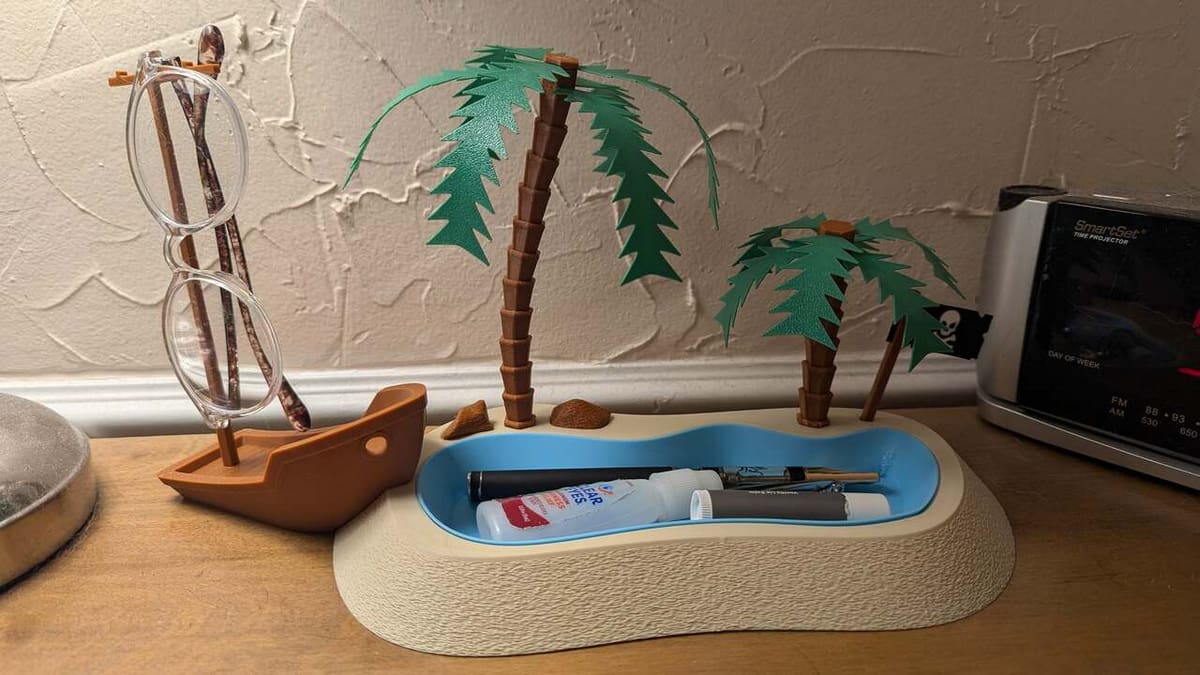
For 3D printing enthusiasts and lovers of the sea, “The Pirate Benchy Bay” is a must-have. This model combines the serenity of tropical beaches with the excitement of pirate adventures, creating a desk accessory that is both functional and decorative. The design includes elements such as palm trees, a pirate flag, and the iconic Benchy boat stranded on the beach, all suggested by the designer to be printed with a layer height of 0.2 mm, 2 walls, and 8% infill.
The Pirate Benchy Bay is easy to assemble and requires no glue, with pieces that easily snap together to form the landscape. Details, such as the sand effect on the base, can be adjusted using fuzzy skin, and the palm fronds can be curved using a heated bed or heat gun to give a more realistic look.
Whether to organize small items or to simply add a touch of adventure to your desk, this model offers a rewarding printing and assembly experience, transporting imaginations to the vast and mysterious ocean.
- Who designed it? michelem
- How printable/popular is it? Over 50 downloads and more than 40 prints, per MakerWorld, show that besides being popular, it is a beautiful place for your “treasures”.
- Where to find it? MakerWorld
- Why do we like it? It’s a beautiful decoration to liven up and organize your environment.
Complete 3D Printer Test
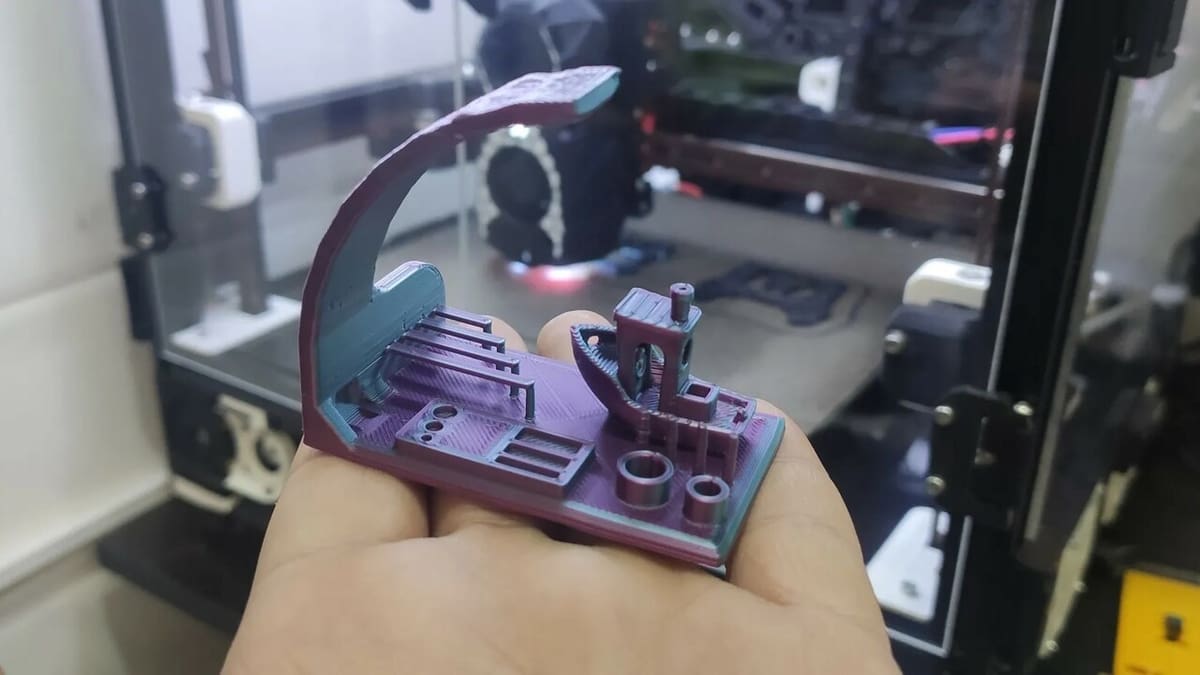
With two variants available, these models allow for troubleshooting and precise calibration of 3D printers.
The first variant is a slightly modified version of the original all-in-one 3D printer test, including a squashing test for a more detailed evaluation. The second variant includes a Benchy scaled down to 50%.
Both these tests cover crucial aspects such as bridging, stringing, dimensional accuracy, overhang performance, cooling, and printing of small details. They’re especially useful for new machines or after modifications and use of new filaments.
The designer recommends printing with a layer height of 0.2 mm, without supports, and opting for 100% infill and 3 perimeters. Enabling the “Detect Thin Perimeters” option in PrusaSlicer further improves results.
This comprehensive set of test patterns not only saves time but also provides detailed insight into printer settings, ensuring high-quality 3D prints and increased troubleshooting efficiency.
- Who designed it? R3D
- How printable/popular is it? With over 5,300 downloads and 72 makes, it’s clearly a popular and useful pair of models.
- Where to find it? Printables
- Why do we like it? It’s a great model to test everything at once and check every detail.
Cthulhu Demon Ship
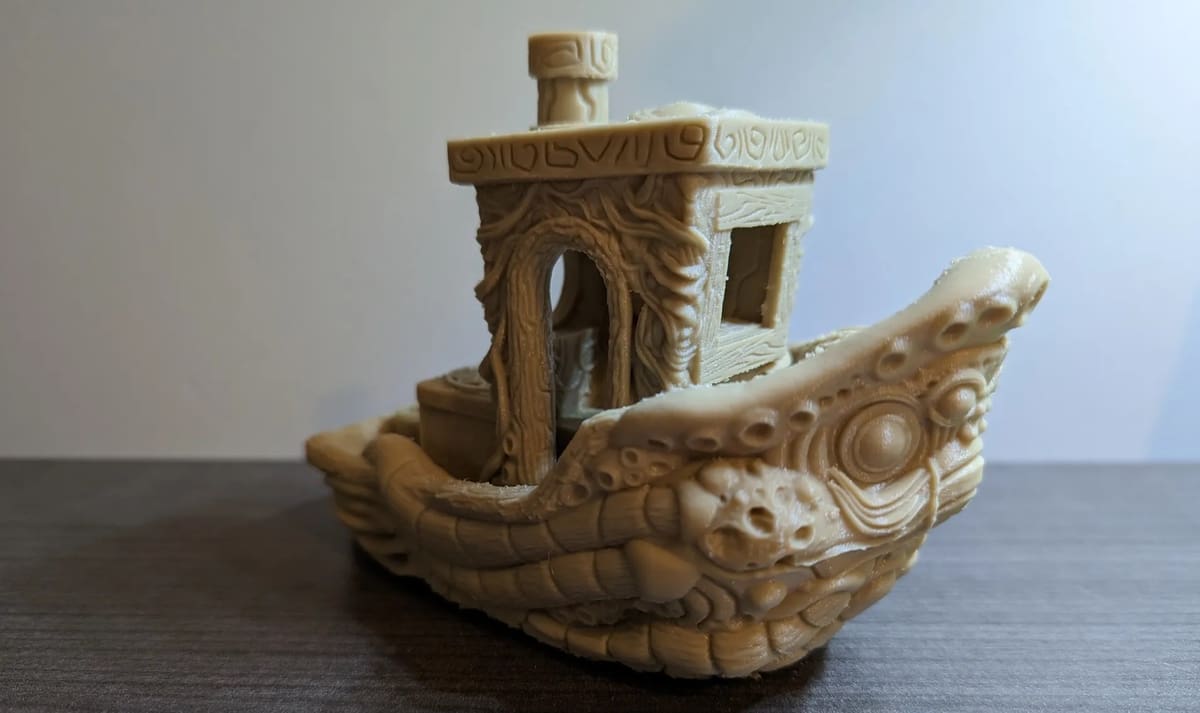
Witness the incredible and meticulously designed Cthulhu Demon Ship, a 3D model that brings to life elements inspired by the famous mythical creature. This model embodies terror, power, and dominance, with monstrous details including tentacle-like projections symbolizing Cthulhu’s bearded face and skeletal features that contribute to its mystical aura. It’s simply perfect for those interested in mythology.
To replicate this model, the designer suggests opting for a layer height of 0.28 mm, 10% infill, and tree supports; with these settings, you’ll have an average print time of just over 13 hours.
This creation is based on the shape of a Benchy, but modeled from scratch, intended to be used as an ornament rather than for calibration purposes, as the original Benchy would be. Users have shared their experiences with different print sizes and post-processing techniques, from splitting the model for easier printing to using specialized filaments for unique finishes.
- Who designed it? GioteyaDesigns
- How printable/popular is it? Between the different repositories, there are almost 14,000 downloads and 88 makes that show it’s well worth the challenge.
- Where to find it? Printables, Cults, Thingiverse
- Why do we like it? It has an incredible amount of detail and is an impressive model.
Floating

This modified Benchy is not only a visually appealing replica, but also a practical one, designed to float modestly in calm waters. With a structure meant to maintain printing times comparable to the original, maker vandragon_de offers users a creative and functional alternative to explore new possibilities and have fun.
To successfully replicate “Ben the Floating Benchmark”, the creator recommends using a resolution of 0.2 mm and an infill of 10%. While some comments show that not all prints float as they should, there are also many suggestions from other makers with tips on how to get the aimed for functionality.
Go ahead and make a real fleet for your pool or bathtub!
- Who designed it? vandragon_de
- How printable/popular is it? 97 makes and a whopping 101,000 downloads make it clear that it’s a fan favorite.
- Where to find it? Thingiverse
- Why do we like it? Besides being a test for your printer, it’s a little boat ready to sail.
Old Paddle-Wheel Steam Boat
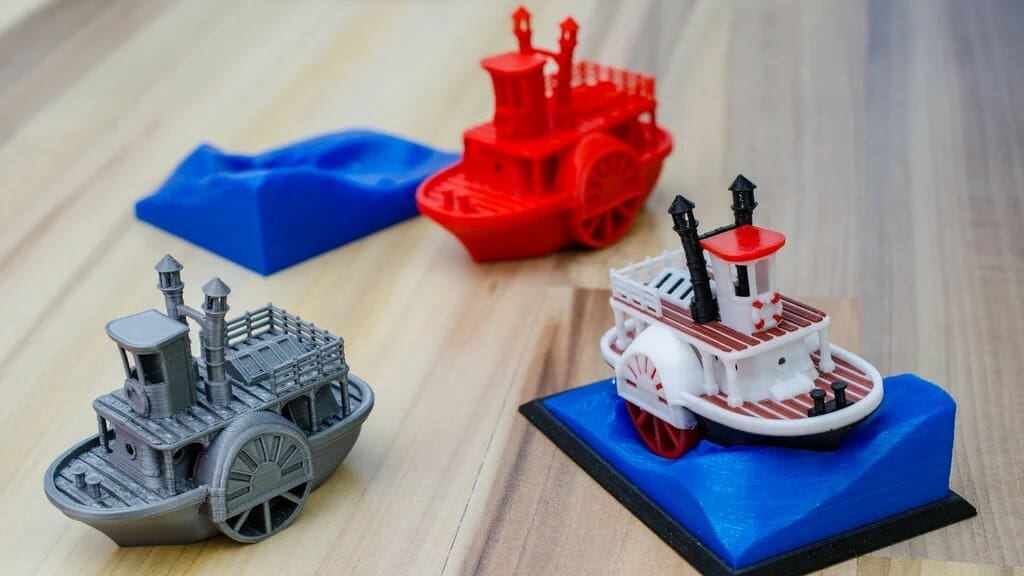
This is another model by vandragon_de that has won over 3D printing enthusiasts! This model was also designed to float, but was additionally thought of as a decoration and testing option for multicolor printing.
Inspired by old paddle steamers, the design went through several iterations until it reached a satisfactory result. When printed at 90% of the original size, like the creator did, the model offers a more compact option but maintains a visually appealing appearance.
To successfully replicate this model, it’s recommended to use a resolution of 0.2 mm and an infill density of 15%. For the multicolor version, print time will more than likely be extended. Be sure to adjust the cooling settings to avoid warping and to ensure accurate details.
- Who designed it? vandragon_de
- How printable/popular is it? 78 makes, 5 remixes, and over 39,000 downloads combined from all sites are proof that it’s worth adding at least one to your collection.
- Where to find it? Thingiverse, Printables, Cults
- Why do we like it? It’s a creative version that can also float and caters to multicolor setups.
Voronoi Lattice
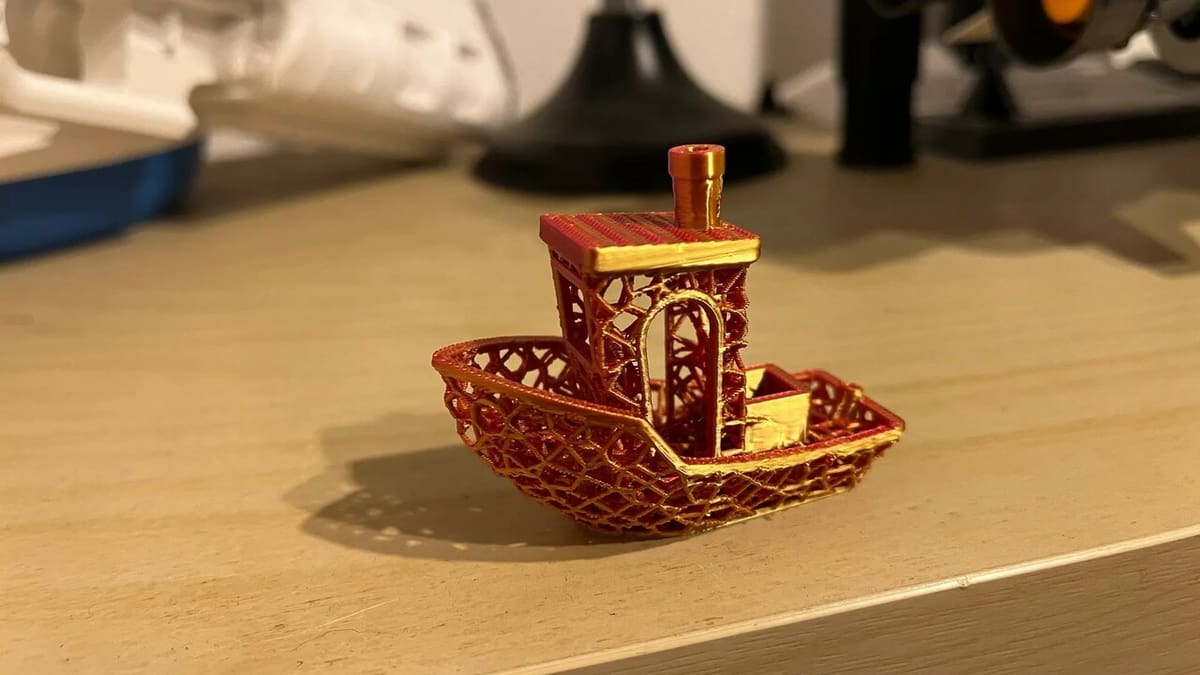
Here is a remixed model and unique interpretation of the classic design, created using the Voronoi lattice feature in Materialise 3-matic. This model stands out for its visual complexity and intricate detailing, representing a true test of skill for well-calibrated 3D printers. A layer height of 0.2 mm, 3 walls, and 15% infill are recommended to achieve the best printing results.
The beautiful design is something that enhances practically any filament. In particular there are several comments about incredible results with special filaments, like silk and dual-color options, which make the final look even more stunning. This redesigned Benchy not only demonstrates the technical capabilities of 3D printing, but also serves as a visual indicator of the creative potential when exploring advanced digital design techniques.
- Who designed it? OverflowTesti
- How printable/popular is it? Over 1,000 downloads and 868 prints show that you can replicate this challenge too.
- Where to find it? Printables
- Why do we like it? In addition to testing your settings, it becomes a small work of art.
RC

The RC Benchy Tugboat is an interesting project that combines the classic Benchy aesthetic with remote control functionality using drone motors. Thinking of a solution to tow his board on the lake, the creator transformed the Benchy into a true and powerful tugboat.
The project’s parts took around 30 hours to be printed, with the hull being split into two and then glued together. For this last part, after assembly, epoxy resin was necessary to waterproof it. The result was so powerful that it was necessary to adjust the engine power to just 15% so that the boat would not capsize when the engines were activated.
To print this model, it’s recommended to use supports and to set a resolution of 0.3 mm to ensure sufficient detail and structural stability. Opting for 15% infill is suggested to balance strength and weight.
If you need a bit of a nudge to be sure you want to take on the project, check out the video to be convinced.
- Who designed it? luisengineering1
- How printable/popular is it? So far the template has been downloaded over 1,000 times and a beautiful make has been shared.
- Where to find it? Thingiverse, YouTube
- Why do we like it? More than just a remote control toy, it’s also a real mini tugboat, so you’ll be putting plenty of skills to the test with it – and not just your printer’s.
For Shower
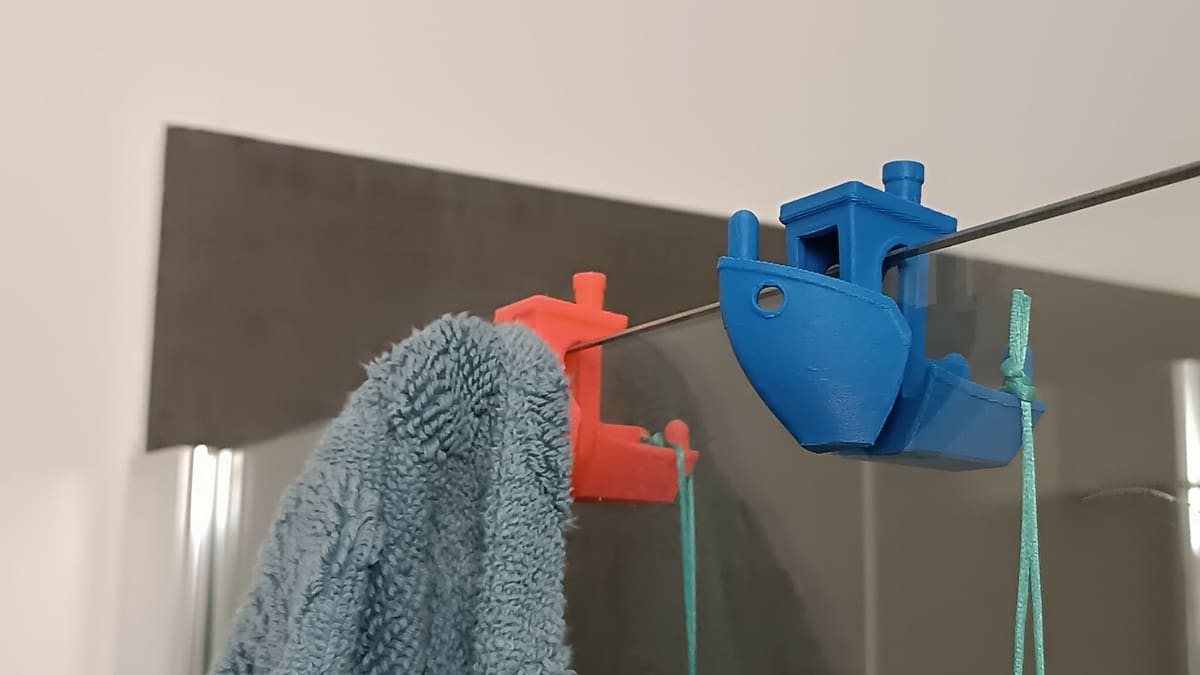
Here’s a chance to turn your countless tests into something especially useful! The Benchy hanger for shower glass is a functional creation designed to be used as a hook on shower glass up to 8-mm thick. The model has become a beautiful inspiration, featuring two strategically placed pegs, one on the front and one on the back, which allow you to hang both a robe and a bath sponge or towel.
No additional supports are required when printing, as long as the cooling setup is adequate to prevent warping. Use a print resolution of 0.2 mm to capture the fine details of the hook and ensure a smooth, sturdy surface. An infill of at least 15% is recommended to have the necessary robustness, especially for the part of the hook that will support the weight of a robe or sponge.
- Who designed it? ValeriaMomo
- How printable/popular is it? This fun bathroom accessory has 75 downloads and over 1,300 views.
- Where to find it? Cults
- Why do we like it? It’s a model that with simple modifications adds a lot of utility beyond the printing test.
License: The text of "3DBenchy Alternatives: RC Benchy, Floating Benchy, & More" by All3DP is licensed under a Creative Commons Attribution 4.0 International License.



